With a wagon-building history stretching back to the middle 1700s, the Studebaker Corporation began building gasoline-engine-powered delivery trucks starting in 1911. The company thrived through World War II—helping to win the war for the Allies in the process—and for a few years after, but then struggled when GM, Ford and Chrysler began to crush smaller American manufacturers with their increasingly sophisticated (yet affordable) products. Still, the storied company from South Bend, Ind., wasn’t giving up on the pickup market, even as the walls closed in, so a new generation of Studebaker pickups hit showrooms for the 1960 model year. This was the Champ, and I’ve found one of these trucks in a northeastern Colorado self-service boneyard.
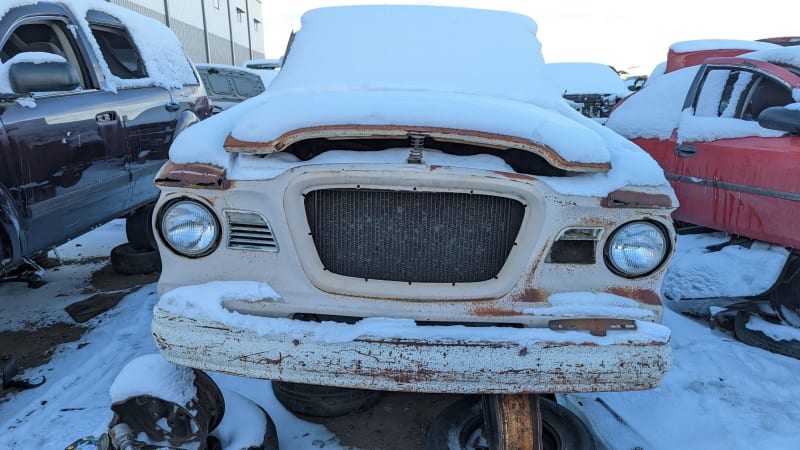
Studebaker pickups had been using the same cab design since the late 1940s, and that cab looked mighty dated as the 1960s dawned, space exploration boomed, and thermonuclear weapons reached the 50 megaton threshold. Studebaker, having merged with Packard in 1954, didn’t have the money to design a new cab from scratch, but the front half of the Lark was the right size to fit Studebaker’s truck frame. With a bit of cutting and pasting, a Lark-based pickup cab was developed and it looked pretty good.
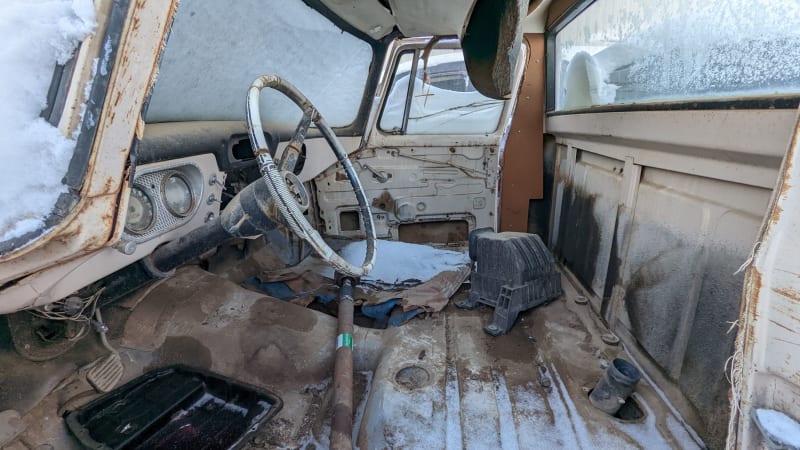
In fact, the new Champs looked every bit as modern as their rivals from Ford, Chrysler and GM. The cheapest possible 1960 Champ pickup started at $1,875 (about $19,051 in 2022 dollars). Dodge could put you in its most affordable pickup for $1,812 ($18,411) that year, while a Chevy pickup started at $1,991 ($20,230). The least expensive ’60 Ford Flareside was $1,956 ($19,875).
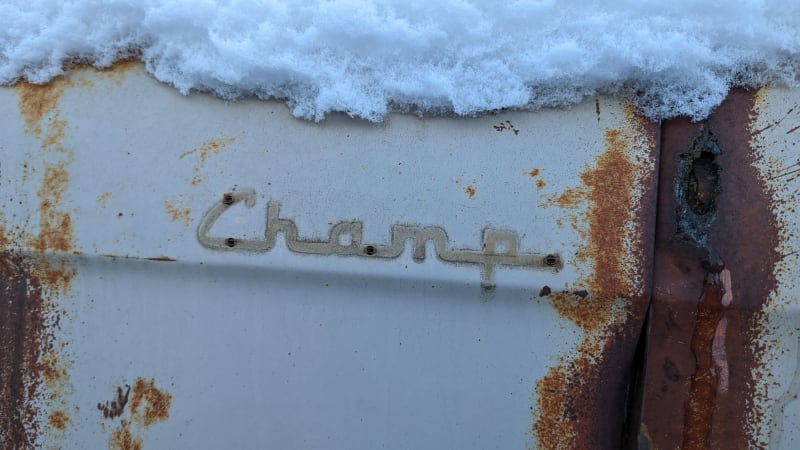
For 1962, the price tag of the half-ton Champ started at $1,870 (about $19,001 today).
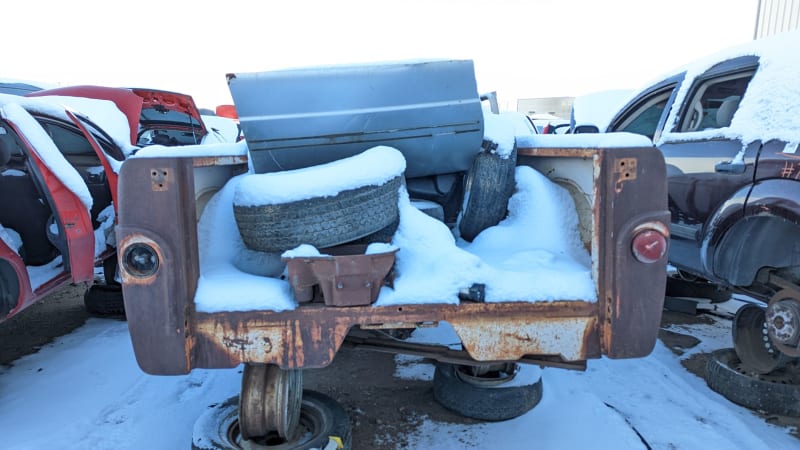
This one has the Spaceside bed, allegedly made using Dodge tooling bought from Chrysler. Sure looks similar! Studebaker made a little money go a long way in the early 1960s, out of necessity.
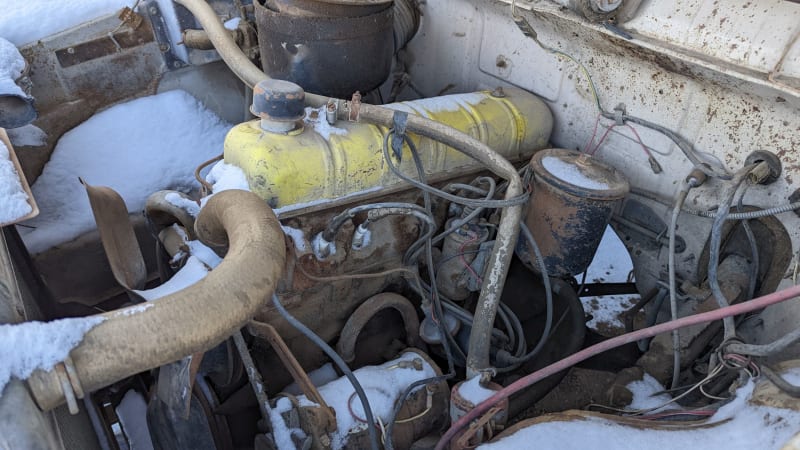
Flathead engines were seriously obsolete by the 1960s, and so it was good news when Studebaker finally offered an overhead-valve straight-six in the Champ for the 1961 model year (Chrysler continued selling some Dodge trucks with flatheads fairly deep into the decade, though most of the later ones were military-only).

This is a 170-cubic-inch (2.8-liter) plant based on Studebaker’s venerable flathead design, rated at 110 horsepower and 156 pound-feet. A Studebaker 289-cubic-inch V8 was available as an option. Various transmissions were available, including a “Flightomatic” automatic; this truck came with the base three-on-the-tree column-shift manual.
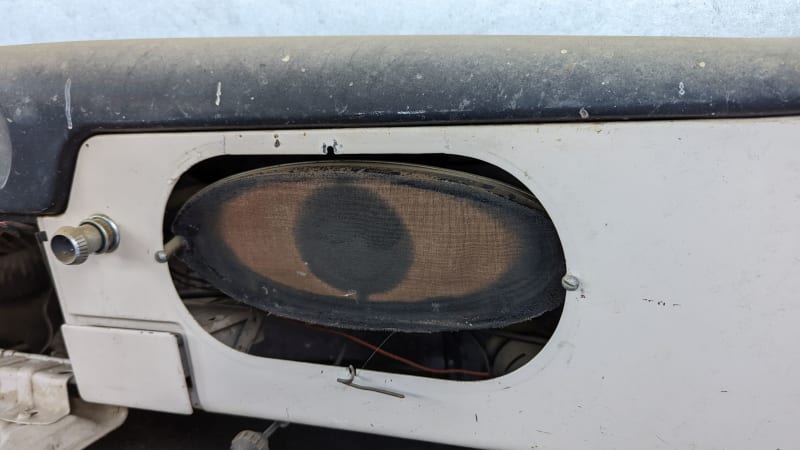
The decorative speaker grille is gone, but the original AM radio speaker remains. Imagine taking U.S. Route 36 from Denver all the way to Indianapolis with Hank Snow’s latest hit buzzing out of this speaker every half-hour!
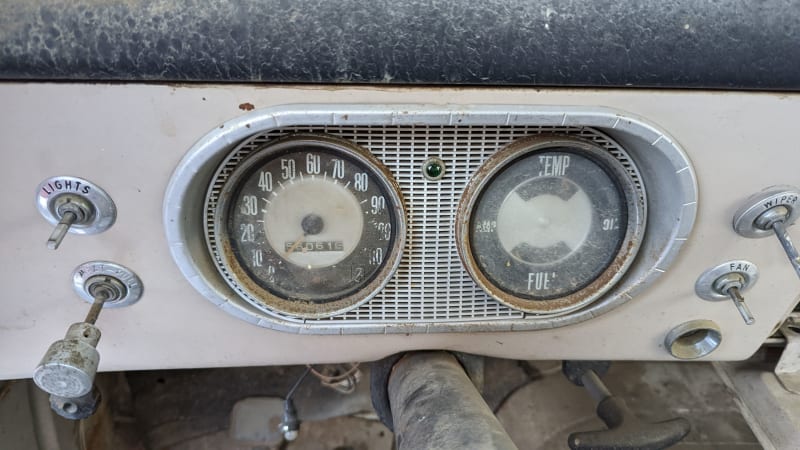
Pickups of this era didn’t go in for fancy switches or instrumentation.

I still find the occasional discarded Studebaker during my junkyard travels, but Studebaker was on the ropes, financially speaking, by the 1960s so its vehicles from the final years are rare. 1964 was the last year for the Champ (and for all U.S.-built Studebakers, for that matter). Studebaker car production continued in Canada into 1966.
It appears that Studebaker didn’t do a lot of TV advertising for the Champ, so here’s a ’62 Lark commercial.
